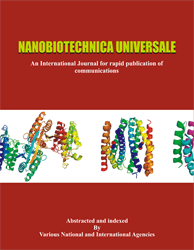Study of Angiosperm in Carbon Sequestration
Sushmita Singh*, Arvind Kumar Singh and Renu Singh
Department of Botany, T.D.P.G. College Jaunpur - 222002 (India) Affiliated to VBSPU, Jaunpur (India) *Corresponding author- Sushmita Singh
ABSTRACT
This study examines how angiosperms, or blooming plants, contribute to carbon sequestration. Specifically, it looks at how they might be able to absorb and hold carbon dioxide (CO2) from the atmosphere, which would help with attempts to mitigate climate change. The photosynthetic mechanisms of angiosperms, which inhabit a wide range of environments from wetlands and coastal regions to forests and grasslands, are essential to the global carbon cycle. By measuring the carbon sequestration capability of different angiosperm species, this study seeks to understand their long-term capacity to store carbon by looking at variables like growth rate, biomass accumulation, root depth, and soil carbon retention.Both field and lab data were used in the study, with a focus on grasses in grassland ecosystems and tree species in forest habitats—two of the best at sequestering carbon. According to the results, some angiosperm trees, such those found in temperate and tropical forests, store a considerable quantity of carbon above and below ground. Through their large root systems, grasses and other herbaceous angiosperms in wetlands and grasslands also help to store carbon by improving the retention of carbon in the soil.The research also assesses environmental factors including temperature, soil quality, and water availability that affect angiosperm sequestration efficiency. Reforestation, afforestation, and sustainable agriculture practices are among the management strategies that have been found to improve angiosperms’ capacity to sequester carbon, making them important contributors to nature-based climate solutions.
